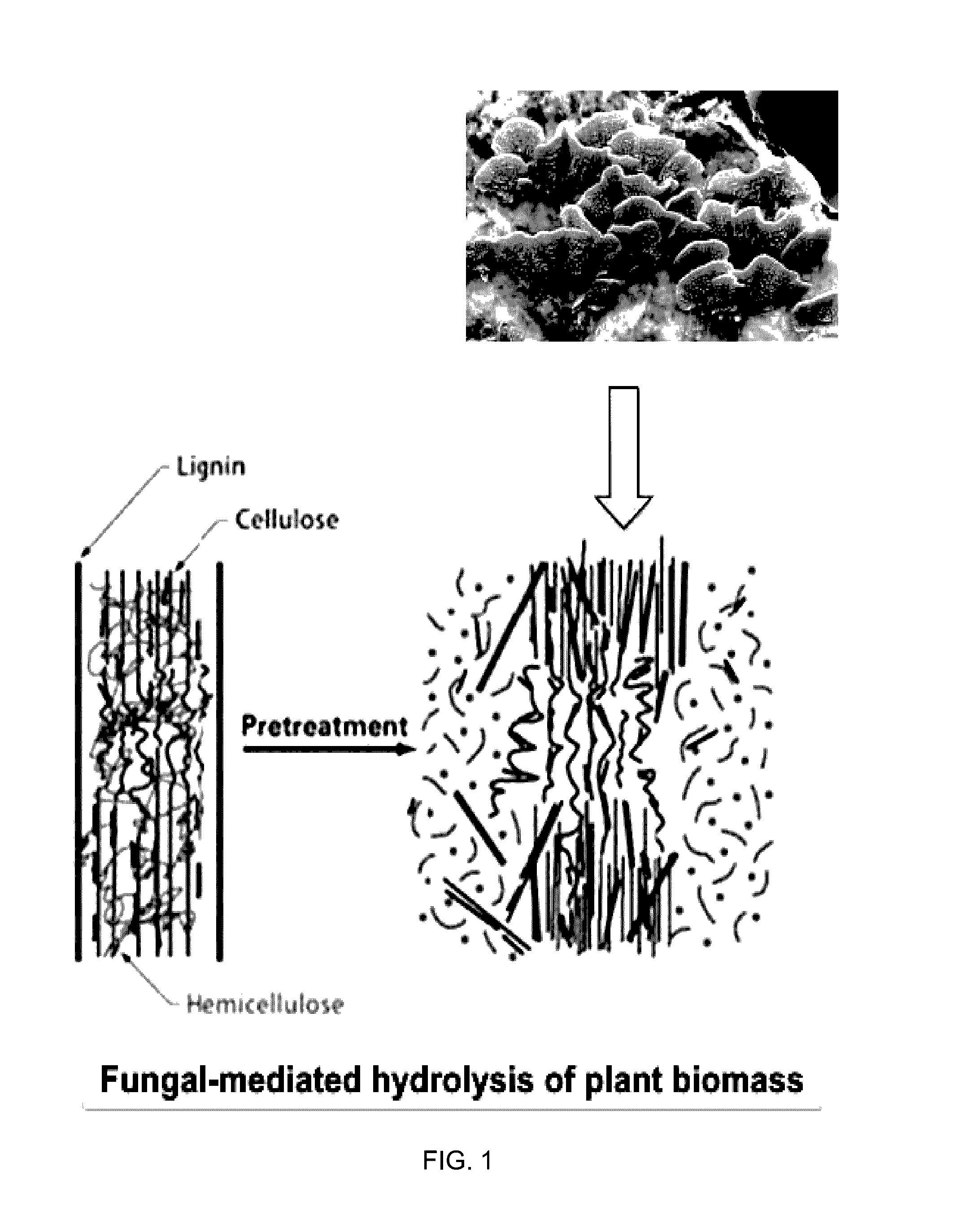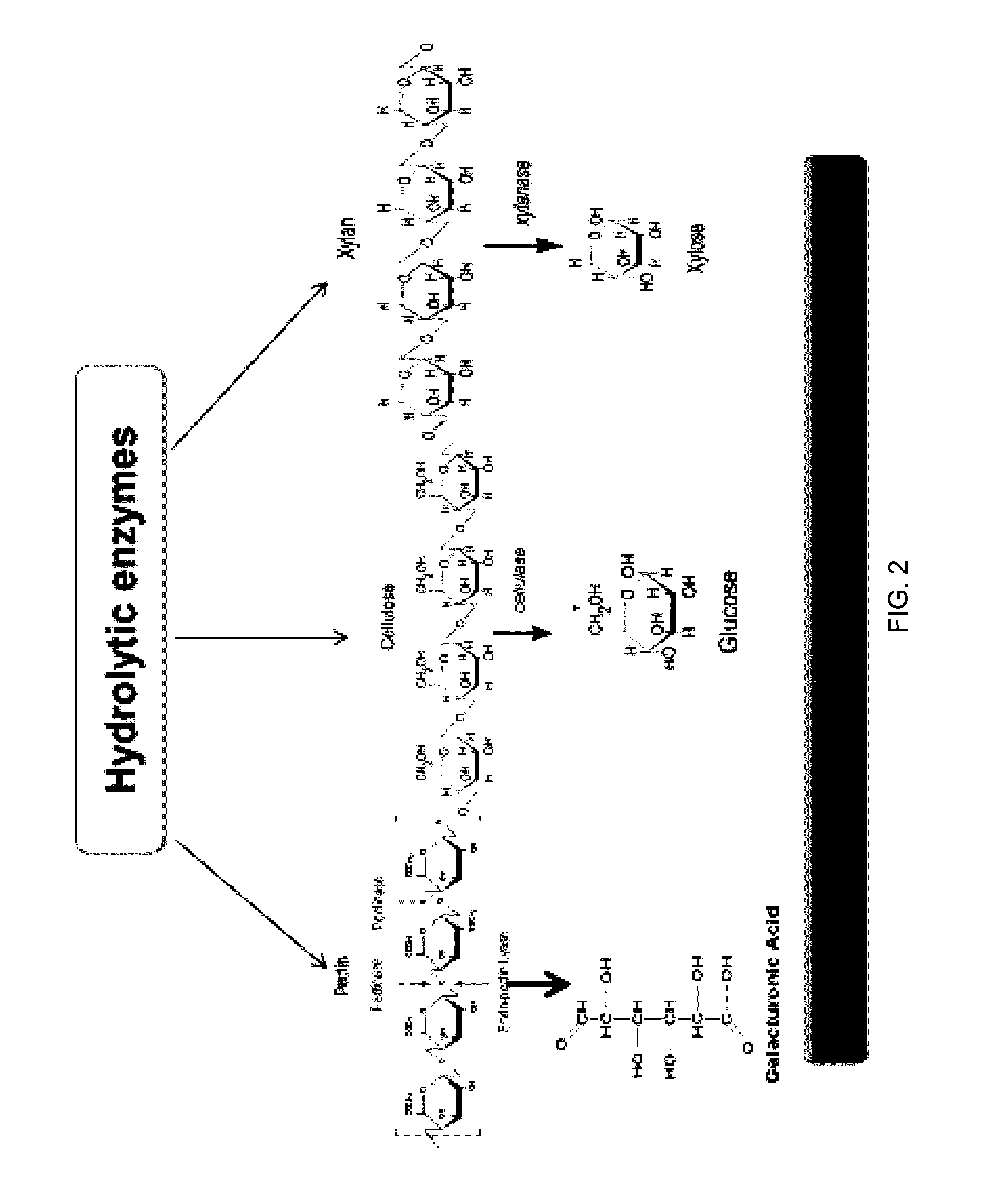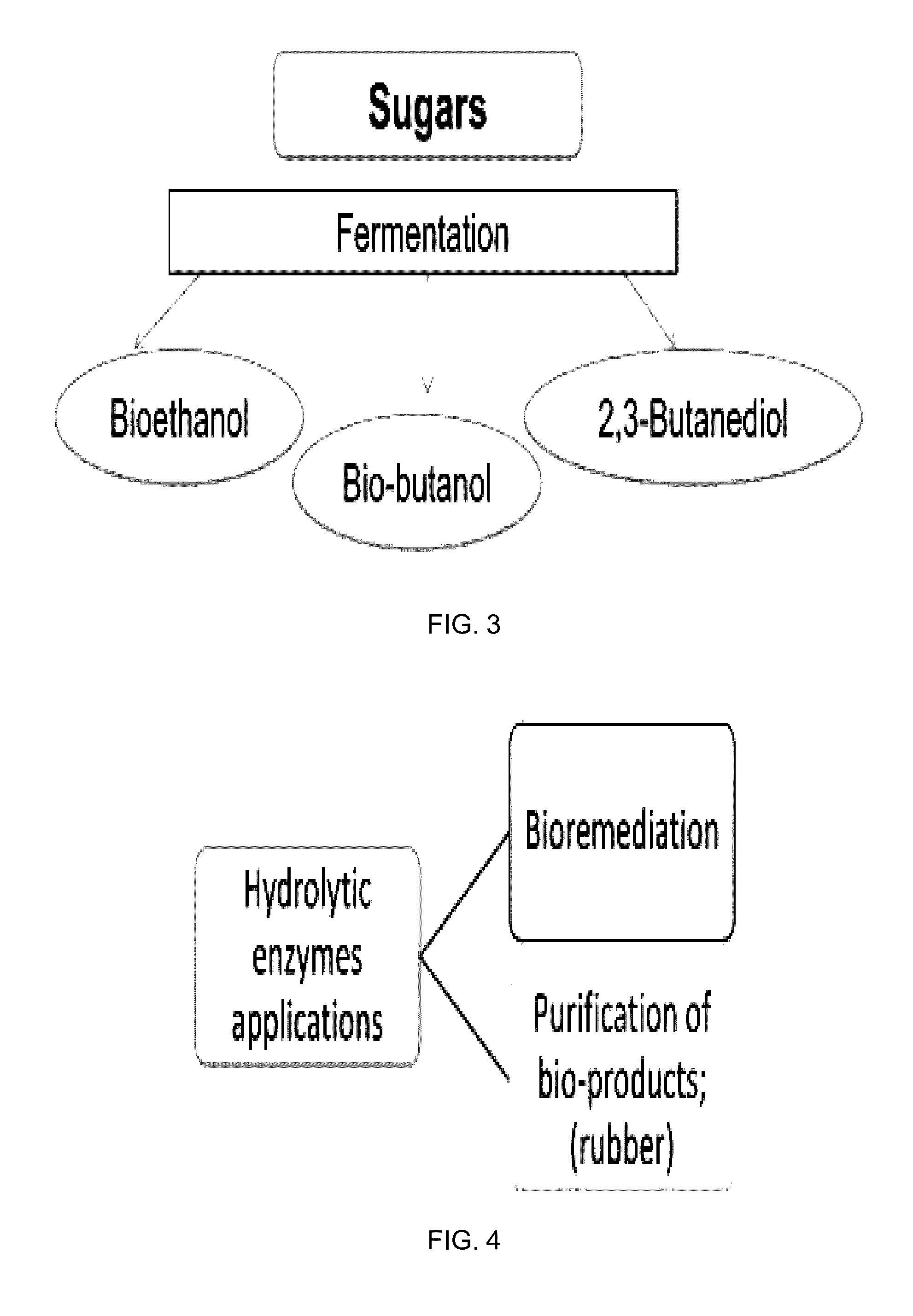Fungal treatment to enhance extractable rubber yield from plants
- Summary
- Abstract
- Description
- Claims
- Application Information
AI Technical Summary
Benefits of technology
Problems solved by technology
Method used
Image
Examples
example 1
Production of Hydrolytic Enzymes by Newly Isolated Strain of Thermomyces lanuginosus and Extraction of Fermentable Sugars from Lignocellulosic Biomass
[0084]A newly isolated strain of Thermomyces lanuginosus, a thermophilic fungus, was assessed for hydrolytic enzyme activity using three low-cost, alkaline-pretreated lignocellulosic feedstocks: guayule bagasse; wheat bran; and wheat straw. Submerged cultures of the newly isolated T. lanuginosus strain were incubated at 55° C. for 8 days in 150 ml shake flasks containing 4.5 g biomass / l as the carbon source. Considerable amounts of extracellular hydrolytic enzymes were produced (Table 1; FIGS. 5, 6A-6B).
TABLE 1Maximum enzyme activity during first 7 days ofincubation of newly isolated T. lanuginosus strainincubated on various carbon sources.Maximum Enzyme Activity During First 7 Days (U ml−1)Filter PaperAssayXylanaseInulinaseCMCase(FPase)PectinaseWheat985.341198.483.642.5StrawGuayule766.5201.218.2115.518.9BagasseWheatLowLowLowLowLowBran...
example 2
Extraction of Natural Rubber from Roots of Taraxacum kok-saghyz
[0089]The newly isolated T. lanuginosus strain was further assessed for its ability to enhance the yield of natural rubber from natural rubber-bearing plant material (FIG. 5).
[0090]5 g of pretreated guayule bagasse was inoculated with the newly isolated T. lanuginosus strain, and incubated for 5 to 7 days at 50° C. During incubation, the fungus produced extracellular pectinase, xylanase, inulinases, and cellulases. The extracellular enzymes were collected in aqueous solution as a crude extract of the newly isolated T. lanuginosus strain.
[0091]5 or 10 g of chopped Taraxacum kok-saghyz (TKS) roots were pretreated using an alkaline pretreatment (NaOH; 40 g / L), and subsequently boiled three to five time for about 30 minutes each time to extract inulin. The resulting aqueous solution comprising the TKS roots was filtered following each boil.
[0092]In parallel, alkaline-pretreated roots of Taraxacum kok-saghyz (TK) were inocul...
PUM
| Property | Measurement | Unit |
|---|---|---|
| Temperature | aaaaa | aaaaa |
| Temperature | aaaaa | aaaaa |
| Temperature | aaaaa | aaaaa |
Abstract
Description
Claims
Application Information
 Login to View More
Login to View More - R&D
- Intellectual Property
- Life Sciences
- Materials
- Tech Scout
- Unparalleled Data Quality
- Higher Quality Content
- 60% Fewer Hallucinations
Browse by: Latest US Patents, China's latest patents, Technical Efficacy Thesaurus, Application Domain, Technology Topic, Popular Technical Reports.
© 2025 PatSnap. All rights reserved.Legal|Privacy policy|Modern Slavery Act Transparency Statement|Sitemap|About US| Contact US: help@patsnap.com



